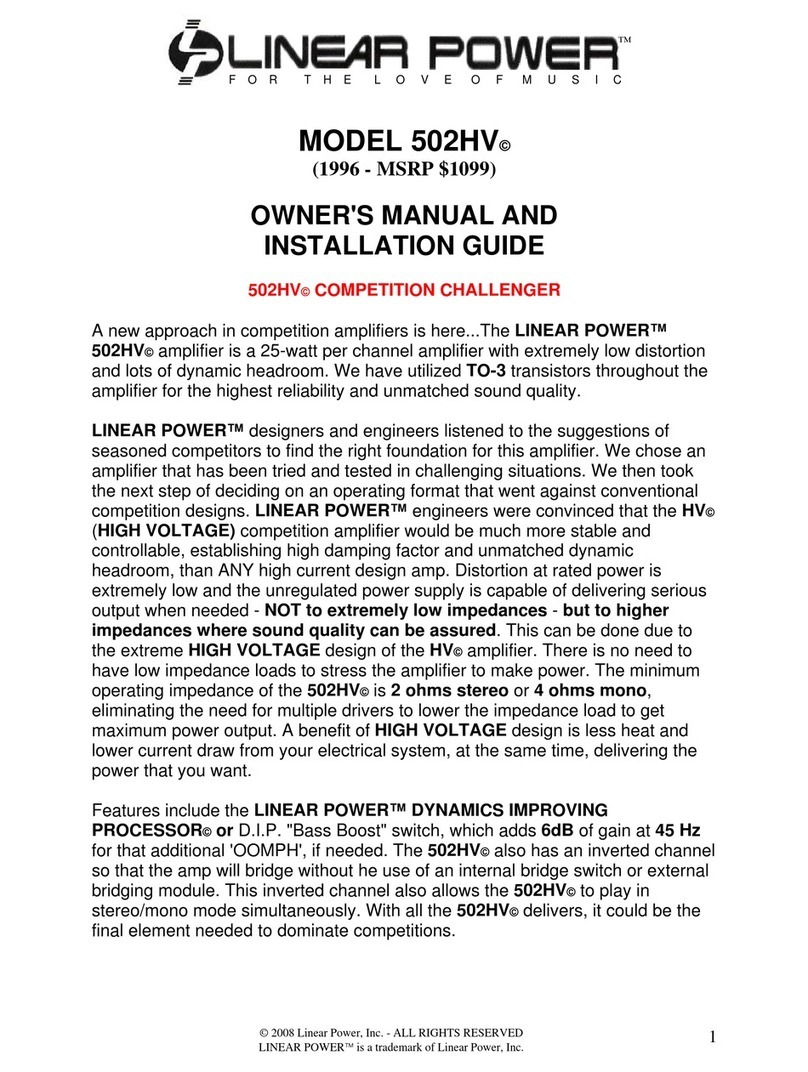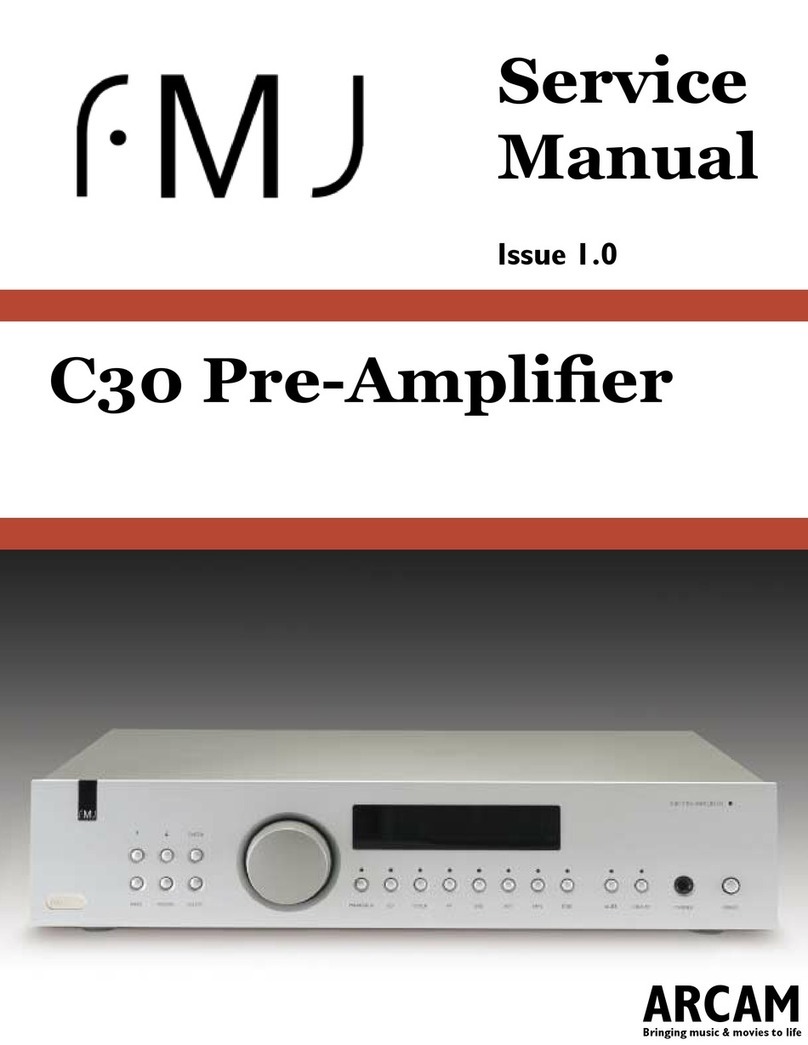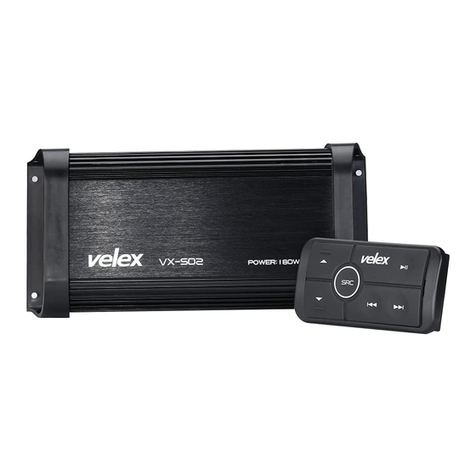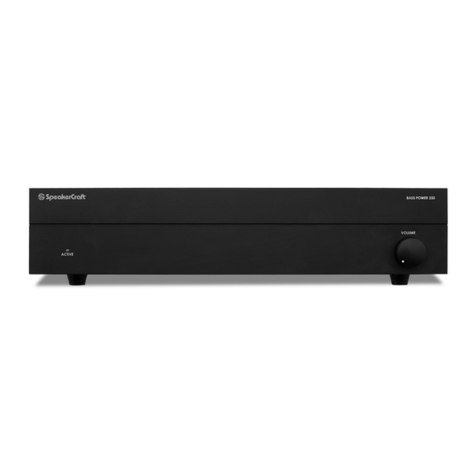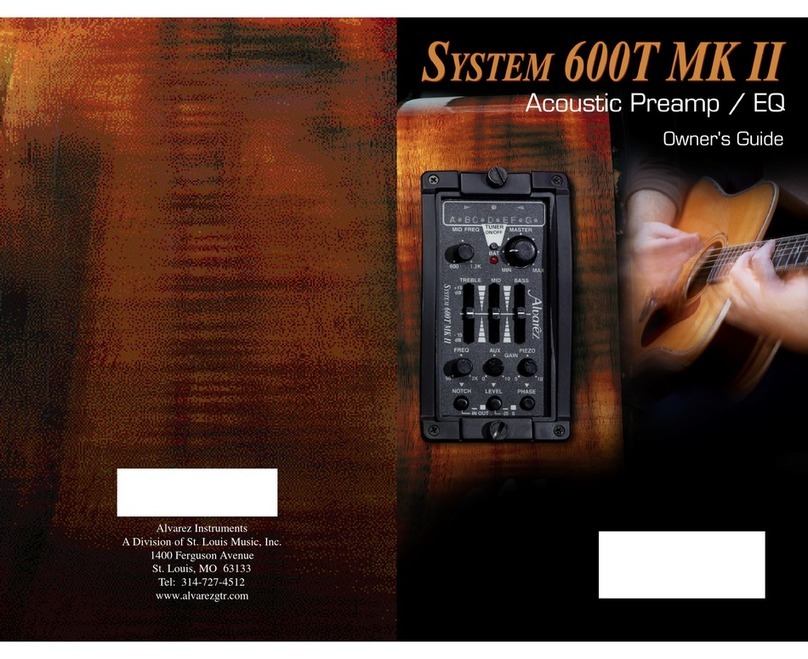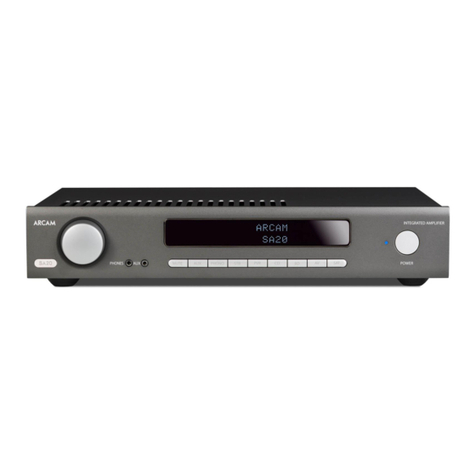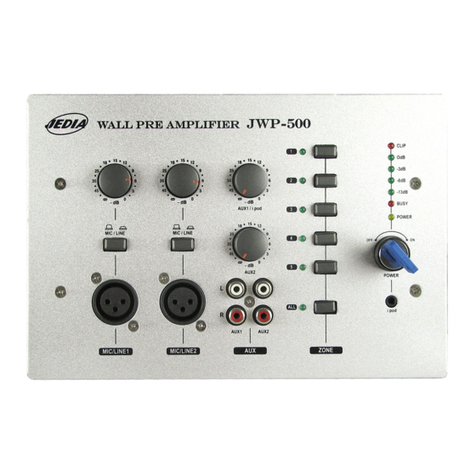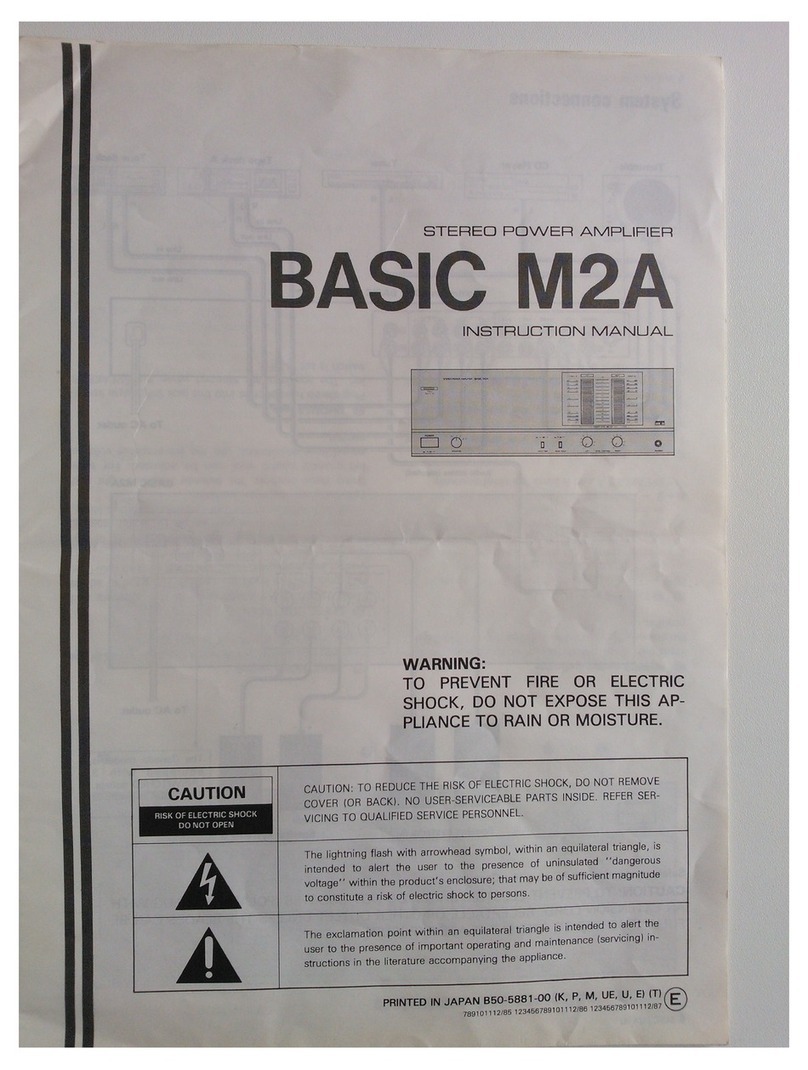Gentec-EO OEM PCB User manual


OEM PCB Manual Revision 2.71
WARRANTY
The Gentec-EO OEM PCB carries a one-year warranty (from date of shipment) against material and/or
workmanship defects, when used under normal operating conditions. The warranty does not cover
damages related to misuse.
Gentec-EO Inc. will repair or replace, optionally, any OEM PCB that proves to be defective during the
warranty period, except in the case of product misuse.
Any attempt by an unauthorized person to alter or repair the product voids the warranty.
The manufacturer is not liable for consequential damages of any kind.
In case of malfunction, contact your local Gentec-EO distributor or nearest Gentec-EO Inc. office to obtain
a return authorization number. The material should be returned to:
Gentec Electro-Optics, Inc.
445, St-Jean-Baptiste, Suite 160
Québec, QC
Canada G2E 5N7
Tel: (418) 651-8003
Fax: (418) 651-1174
e-mail: info@gentec-eo.com
website: www.gentec-eo.com
CLAIMS
To obtain warranty service, contact your nearest Gentec-EO agent or send the product, with a description
of the problem, transportation and insurance prepaid, to the nearest Gentec-EO agent. Gentec-EO Inc.
assumes no risk for the damage in transit. Gentec-EO Inc. will, at its option, repair or replace the
defective product free of charge or refund your purchase price. However, if Gentec-EO Inc. determines
that the failure is caused by misuse, alterations, accident or abnormal condition of operation or handling,
it would therefore not be covered by the warranty.
SAFETY INFORMATION
Do not use the OEM PCB if the device or the detector looks damaged, or if you suspect that the OEM
PCB is not operating properly.
Caution: Changes or modifications not expressly approved in writing by Gentec-EO Inc. may
void the user’s authority to operate this equipment.
SYMBOLS
The following international symbols are used in this manual:
Refer to the manual for specific Warning or Caution information to avoid any damage
to the product.
DC, Direct Current

OEM PCB Manual Revision 2.72
TABLE OF CONTENTS.
1. THE OEM PCB
1.1 INTRODUCTION..................................................................................................................................3
1.2 SPECIFICATIONS ...............................................................................................................................3
1.3 POWER SUPPLY................................................................................................................................4
1.4 CONNECTING THE DISK TO THE PCB..................................................................................................4
1.5 AVOIDING NOISE...............................................................................................................................4
1.6 REMOVING THE ANTICIPATION ...........................................................................................................4
1.7 ADJUSTING THE OEM PCB...............................................................................................................5
1.8 APPENDIX 1......................................................................................................................................6
LIST OF ILLUSTRATIONS
FIG 1-1 THE OEM PCB POTENTIOMETER. 5
FIG 1-2 VIEW OF THE OEM PCB IC SIDE 6
FIG 1-3 VIEW OF THE OEM PCB POTENTIOMETER SIDE. 7
FIG 1-4 THE OEM PCB 8

OEM PCB Manual Revision 2.73
1 THE OEM PCB
1 Introduction
The OEM PCB contains 1 amplification circuit and 1 anticipation circuit. The circuits are wired in series.
The OEM PCB requires only 1 single power supply. The negative power is generated on board. The
OEM PCB gain is factory adjusted, but there is a potentiometer for fine tuning. The anticipation
potentiometer is set at mid range and may have to be tune with the OEM head. There is also a
potentiometer to adjust the offset of the amplification circuit.
1.1 Specifications
The following specifications are based on a one-year calibration cycle, an operating temperature of 18 to
85ºC (64 to 185ºF) and a relative humidity not exceeding 80%.
Table 1-1 List of Specifications
OEM PCB specifications
Input range
-0.7 to VDD-3V
Output Voltage
-0.3 to VDD-3 Volts to a maximum of 12 V.
Response Time (accelerated)1
Head dependant
Maximum temperature
85 ºC
Output Impedance
50 ohms
Input Impedance
>10 Mohms
Dimensions
41 (L) x 29 (W) x 18 max (H) mm
Weight
10 g
Output and power Connector type
4 pins Male Molex: part number 22-27-2041
4 pins Female Molex: part number: 22-01-2045
Terminal part number: 08-50-0032
Disc connector
3 pins Male Molex: part number 22-27-2031
3 pins Female Molex: part number 22-01-2035
Terminal part number: 08-50-0032
Connector hole size
38 mils
Connector hole spacing
100 mils
External Power Supply
Power supply range (VDD) and no
load current consumption
12 to 16 VDC with 8 mA no load,
17 to 24 VDC with 50 mA no load

OEM PCB Manual Revision 2.74
1.2 Power Supply
The OEM PCB needs only a positive power supply, the negative power supply is generated on-
board. The OEM PCB is protected against voltage inversion and voltage spikes. The internal
voltage is limited via a 15 V zener diode. The maximum supply is 24 V. Do not connect the Output
to the Power, it will damage the PCB.
The maximum output voltage is limited by the voltage drop of the analog circuit. The output
formula is -0.3 to VDD-3 Volts to a maximum of 12 V. Here is a table for quick reference.
Power supply voltage (VDD)
Maximum Output
16 V to 24 V
12 V
14 V
11 V
13 V
10 V
12 V
9 V
1.3 Connecting the disk to the PCB.
We recommended the distance between the disc and PCB to be as short as possible. When the
OEM disk is less than 3 inch apart from the PCB, use two gage 26 wires. Connect the disk using
the molex 3 pin connector. If the disk is far from the PCB, it is recommended to use a shielded two
wire cable, ex: Belden # “9397 black”. The output of the OEM PCB will not work in the negative
input voltage. The output pad is P4 or pin 1 of J1. The cable length between the PCB and the
measuring device should be less than 2 meters.
1.4 Avoiding Noise
The OEM PCB may have a high gain configuration, making it very sensitive to external noise. It is
recommended to shield the OEM PCB in a metal box. It is also recommended to connect the GND
to all parts touching the disk. If you still have noise, you will have to shield the disk, wires and
PCB.
1.5 Removing the Anticipation
If the OEM PCB is in a noisy environment, the anticipation circuit can sometimes cause additional
noise in the measure. To remove the anticipation remove Resistor R22 see Fig # 1-3. You will
need to adjust the offset. See section 1.7. The gain will not change.

OEM PCB Manual Revision 2.75
1.6 Adjusting the OEM PCB.
The OEM PCB has 3 potentiometers:
Potentiometer R7 is the offset adjustment.
Potentiometer R5 is the gain adjustment.
Potentiometer R6 is the anticipation adjustment.
The gain is factory adjusted, but the potentiometer has a ±30% adjustment. The anticipation is
factory adjusted, but the anticipation potentiometer has a ±30% adjustment.
Procedure:
Connect the disk using the 3 pin female connector. The center pin is not used.
Insert the Output/power 4 pin female Molex connector.
Plug the power supply.
Plug the output to a voltmeter.
Wait until the sensor is thermally stabilized. Adjust to zero the offset with R7.
Turn on the light source. If necessary, adjust the Gain using R5.
To adjust the anticipation, plug the output to an oscilloscope.
Step 1: Turn on the light source,
Step 2 : Look at the shape of the output signal. If the signal is too slow, turn R6
counterClockwise. If the signal is too fast turn R6 clockwise.
Step 3: Go to step 1
Fig 1-1 The OEM PCB Potentiometer.
OEM PCB
Gain
(R5)
Anticipation
(R6)
Offset
(R6)
(R7)

OEM PCB Manual Revision 2.76
1.7 Appendix 1
Before making your cable, make sure you check the pin out of J1 because the viewing direction
change the order of it.
Fig 1-2 View of the OEM PCB IC side

OEM PCB Manual Revision 2.77
Fig 1-3 View of the OEM PCB potentiometer side.

OEM PCB Manual Revision 2.78
Fig 1-4 The OEM PCB

OEM PCB Manual Revision 2.79
Table of contents
Popular Amplifier manuals by other brands
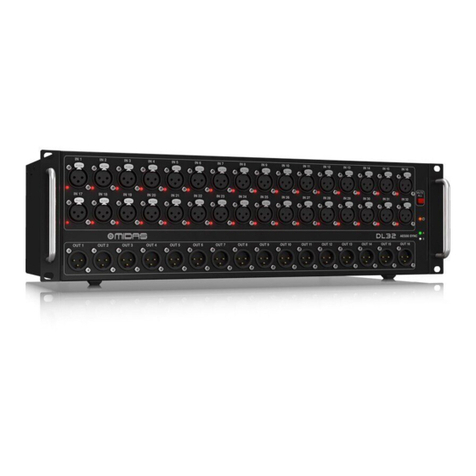
Midas
Midas Digital Snake DL32 quick start guide
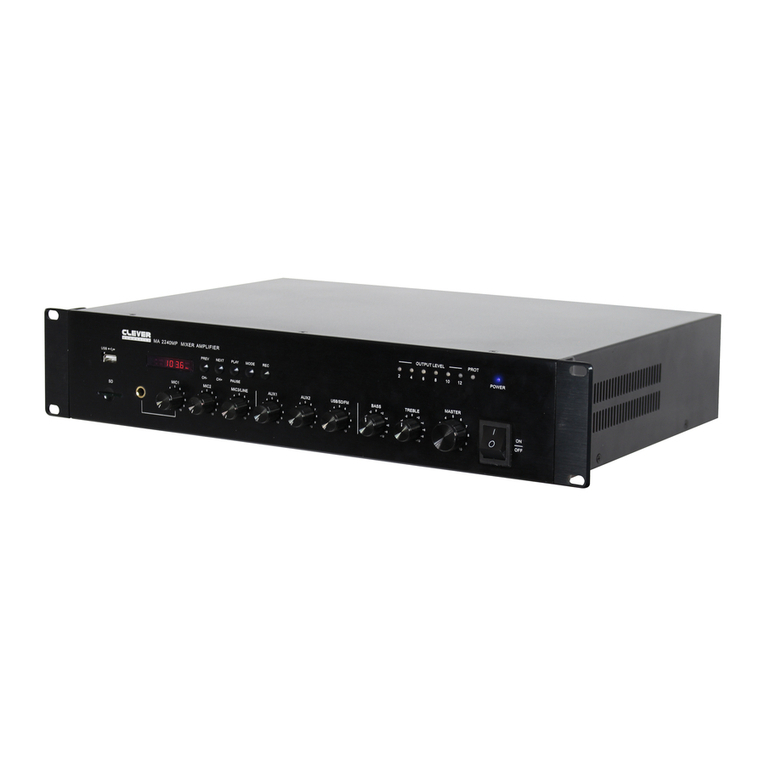
Clever Acoustics
Clever Acoustics MA 260MP user manual

Advance acoustic
Advance acoustic X-i50BT quick start

Hogtunes
Hogtunes REV 200SG KIT-RM installation manual

Channel Master
Channel Master CM-7777 instruction sheet
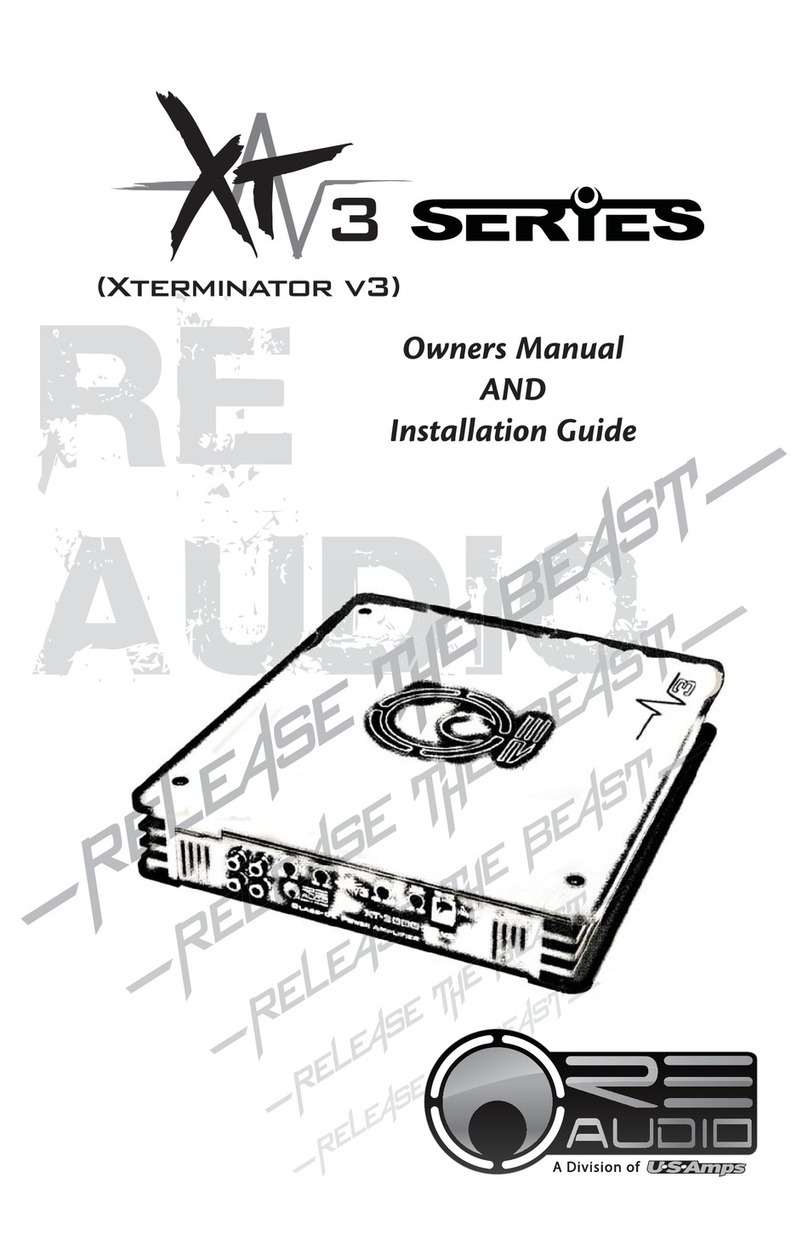
RE Audio
RE Audio XTerminator v3 Owner's manual and installation guide
